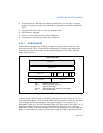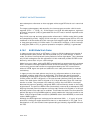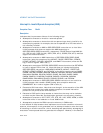
Vol. 3 6-31
INTERRUPT AND EXCEPTION HANDLING
Interrupt 3—Breakpoint Exception (#BP)
Exception Class Trap.
Description
Indicates that a breakpoint instruction (INT 3) was executed, causing a breakpoint
trap to be generated. Typically, a debugger sets a breakpoint by replacing the first
opcode byte of an instruction with the opcode for the INT 3 instruction. (The INT 3
instruction is one byte long, which makes it easy to replace an opcode in a code
segment in RAM with the breakpoint opcode.) The operating system or a debugging
tool can use a data segment mapped to the same physical address space as the code
segment to place an INT 3 instruction in places where it is desired to call the
debugger.
With the P6 family, Pentium, Intel486, and Intel386 processors, it is more convenient
to set breakpoints with the debug registers. (See
Section 16.3.2, “Breakpoint Excep-
tion (#BP)—Interrupt Vector 3,” for information about the breakpoint exception.) If
more breakpoints are needed beyond what the debug registers allow, the INT 3
instruction can be used.
The breakpoint (#BP) exception can also be generated by executing the INT n
instruction with an operand of 3. The action of this instruction (INT 3) is slightly
different than that of the INT 3 instruction (see “INTn/INTO/INT3—Call to Interrupt
Procedure” in
Chapter 3 of the Intel® 64 and IA-32 Architectures Software Devel-
oper’s Manual, Volume 2A).
Exception Error Code
None.
Saved Instruction Pointer
Saved contents of CS and EIP registers point to the instruction following the INT 3
instruction.
Program State Change
Even though the EIP points to the instruction following the breakpoint instruction, the
state of the program is essentially unchanged because the INT 3 instruction does not
affect any register or memory locations. The debugger can thus resume the
suspended program by replacing the INT 3 instruction that caused the breakpoint
with the original opcode and decrementing the saved contents of the EIP register.
Upon returning from the debugger, program execution resumes with the replaced
instruction.


















